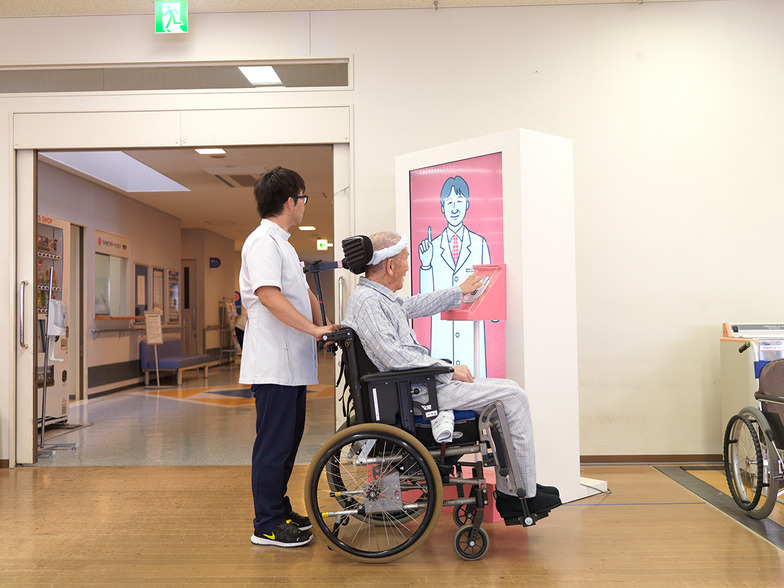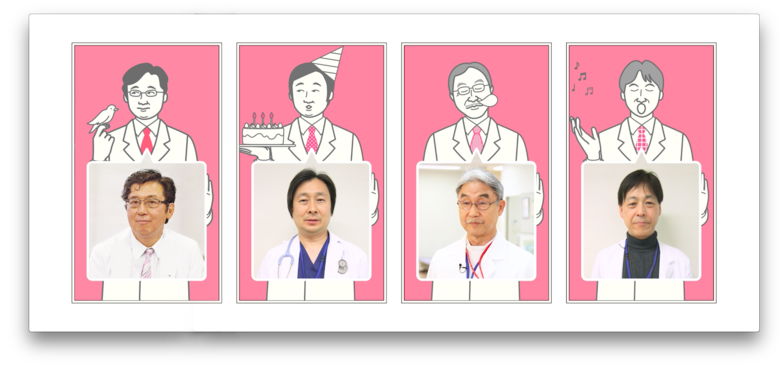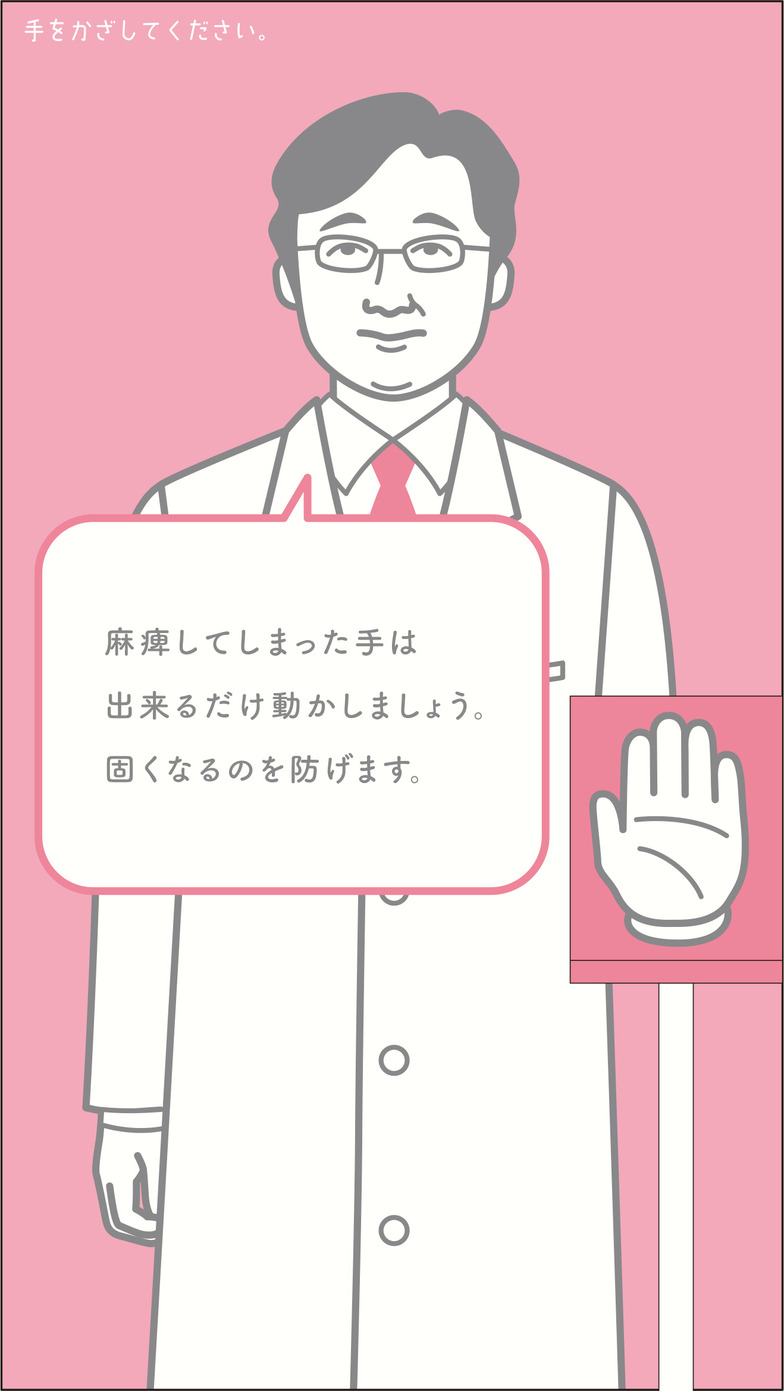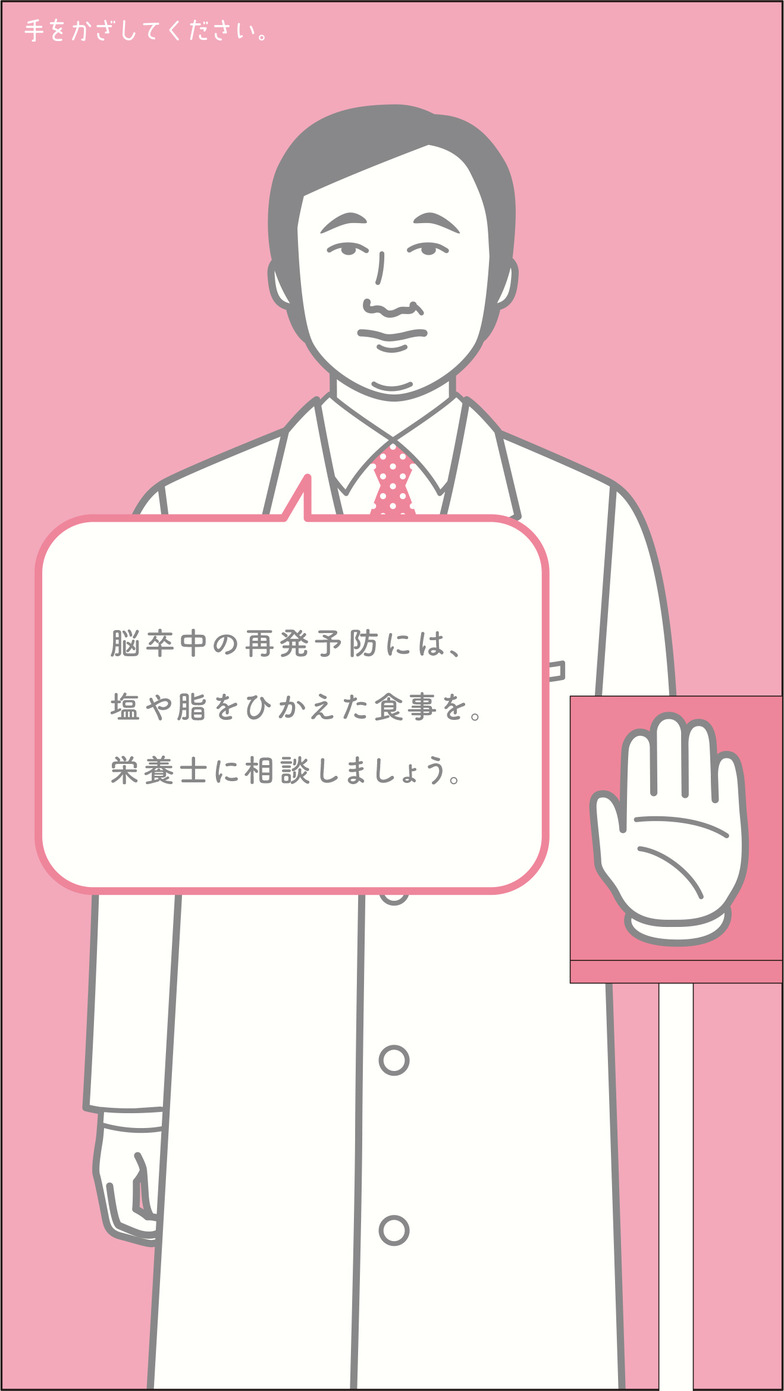Hello, I'm copywriter Yukio Hashiguchi. Solving various hospital challenges through "hospitality." That's the "Hospitality" project. In the previous article, we introduced "Disinfection Sensei," an idea to prevent hospital-acquired infections, from the initiatives at Mihara Memorial Hospital in Gunma Prefecture. This time, we introduce a new "Sensei."
Mihara Memorial Hospital specializes in neurological disorders, primarily stroke. Alongside cutting-edge treatment, it places strong emphasis on functional recovery through rehabilitation.
We were given a tour of the recovery-phase rehabilitation ward. We interviewed doctors and rehabilitation specialists and tried out various rehabilitation equipment ourselves.
Incorporating "Support" into Rehabilitation
Rehabilitation begins with a physician's diagnosis and progresses through the collaborative efforts of various staff members, including physical therapists, occupational therapists, and speech-language pathologists. It requires persistent, repetitive work over a set period. More than with ordinary treatment, patients themselves need to adopt a positive attitude. What can hospitality contribute? We held numerous team discussions.
That's when we came up with the idea of incorporating "encouragement" into rehabilitation.
In rehabilitation settings, alongside professional guidance, we encourage patients with phrases like "Let's work hard towards discharge!" We felt this support sustains patients and enhances rehabilitation outcomes. We ourselves have experienced how small acts of encouragement can become a powerful force in our own work and studies.
Based on this insight, we created "High-Five Sensei."
HOSPITAL-TY Development Product 2: High-Five Teacher
High-Five Teacher is, as the name suggests, a digital signage teacher who cheers on patients by giving them high-fives.

Loading data from the patient who high-fived!
Dr. High-Five greets patients at the entrance of the rehabilitation center. When a patient high-fives his palm, a vein sensor authenticates the individual and accesses their information in the database. This system then displays a personalized encouragement message for each person.
The content ranges from practical rehabilitation advice to casual chat about favorite sports or hobbies. To create a genuine conversational feel, over 28,000 comment combinations are prepared.
For example, for a patient recovering from a stroke,
The comments were created based on a prior survey of patients to understand their rehabilitation needs
Comments were created based on questionnaires completed by patients beforehand to understand their rehabilitation details and hobbies. The system is designed so hospital staff can easily make corrections or additions.
This allows for flexible updates whenever existing comments become stale or new patients join. We also input topics from everyday conversations, current events, or quizzes, enabling on-site adaptability.

As you can see in the images, there are four patterns of doctor illustrations. The models are actual doctors working at Mihara Memorial Hospital.
From left to right: Director Dr. Ban Mihara, Stroke Department Head & Dementia Disease Medical Center Director Dr. Takao Kanzawa, Vice Director & Emergency Department Head Dr. Yoshiaki Tanizaki, and Cardiology Department Head Dr. Hiromi Eguma. The art director drew them, and they're popular for being "just like the real thing!" (laughs). The attending physician interacts with patients mainly during examinations and typically doesn't meet them in the rehabilitation setting. The High-Five Doctor serves as a mechanism to convey the attending physician's support.
Rehabilitation Effects with "Dr. High-Five"
From its introduction on March 30th until the end of November, 63 patients using the Rehabilitation Center registered for the program. The hospital reported that making the high-five a daily routine added structure to patients' lives and fostered a more positive outlook. Consequently, rehabilitation effectiveness naturally improved, and patients' anxieties about their prognosis and future were also reduced.
While medical data is currently being investigated, it's also noted that the displayed messages sparked conversations, helping to bridge the gap between doctors, staff, and patients. It was an unexpectedly pleasant surprise that High-Five Sensei went beyond its original intent of "supporting patients" to actively foster human communication within the hospital.
High Touch Sensei is not limited to its implementation at Mihara Memorial Hospital. With future expansion in mind, we have applied for a trademark. It can be installed in hospitals and other facilities nationwide!
For details about Hi-Touch Sensei or Hospitality, please contact ぜひhospital-ty@dentsu.co.jp (Hashiguchi / Kanasaka).
Next time, in the final installment, a new kind of doctor will appear—one quite different from the digital doctors we've seen so far!









